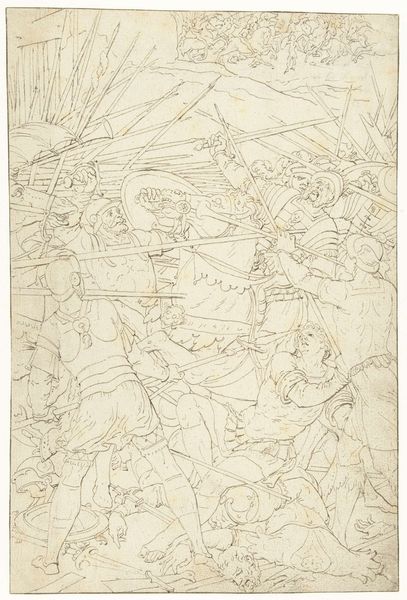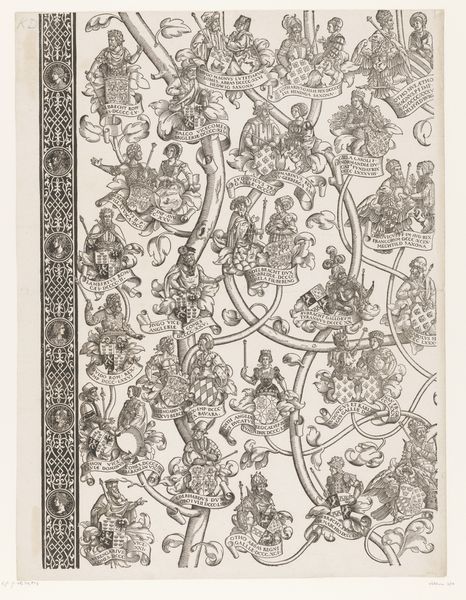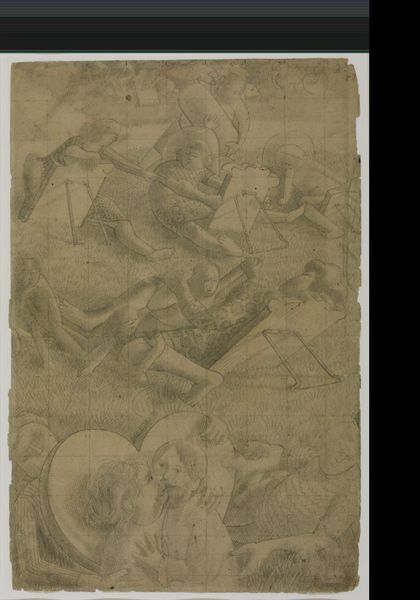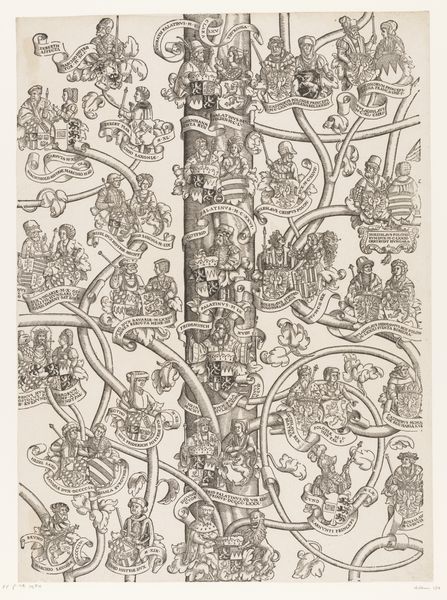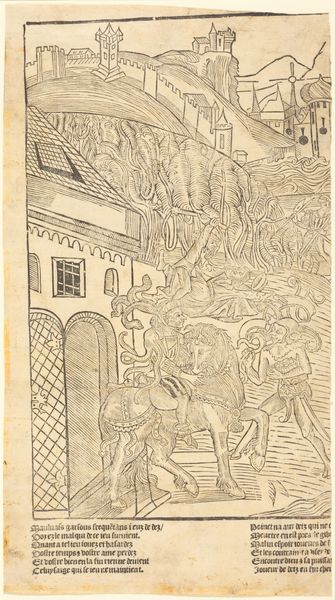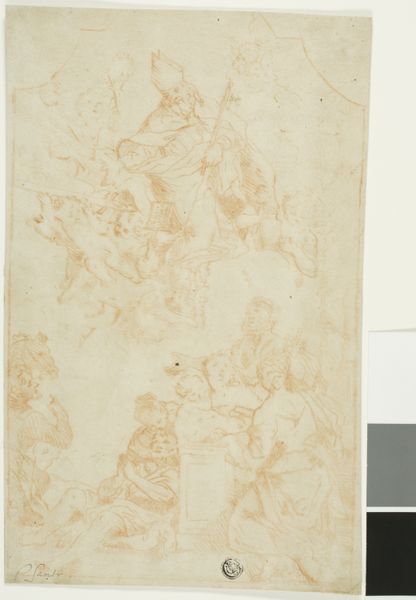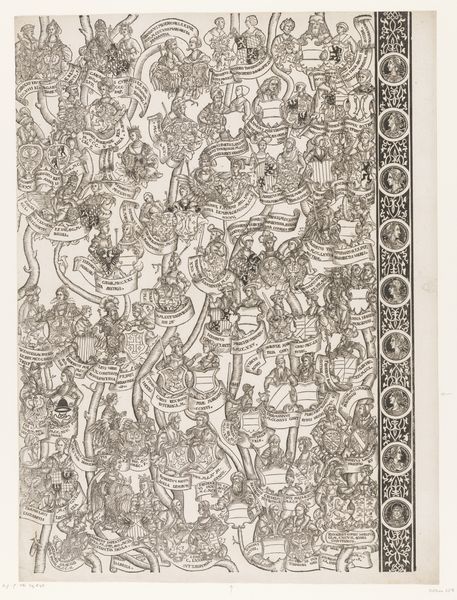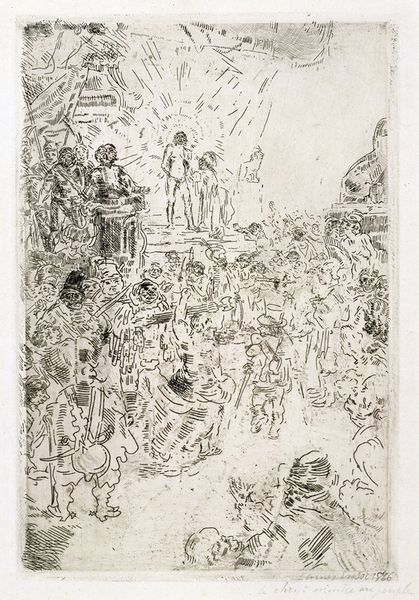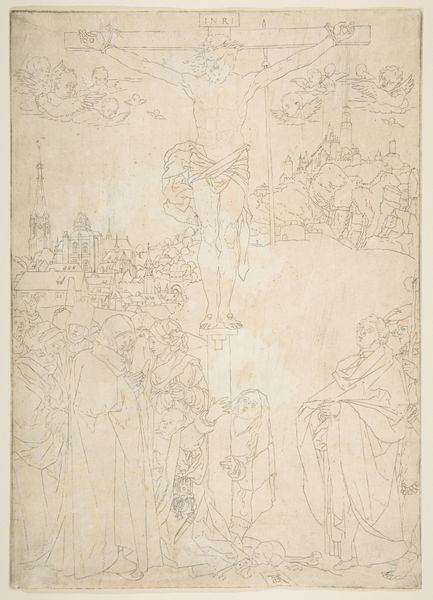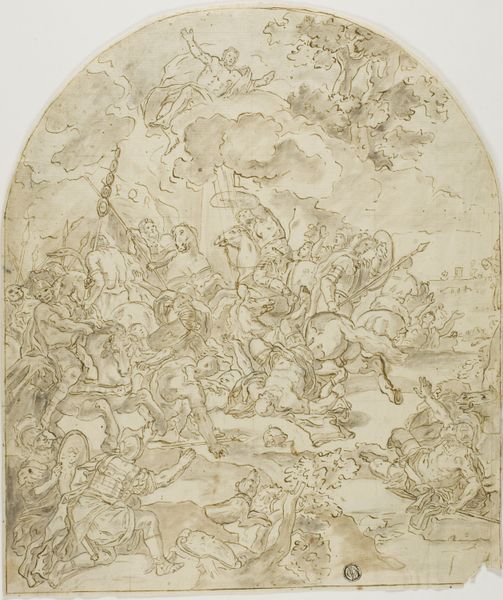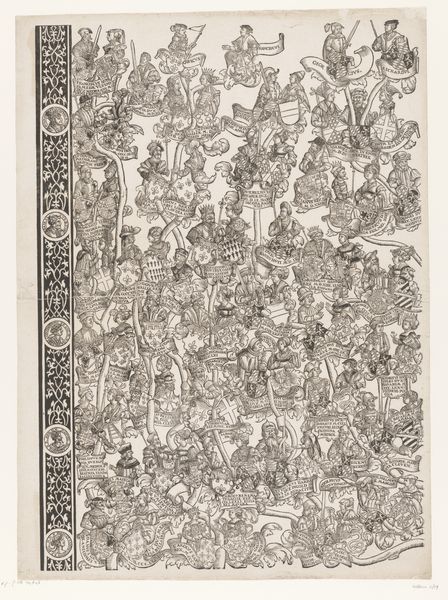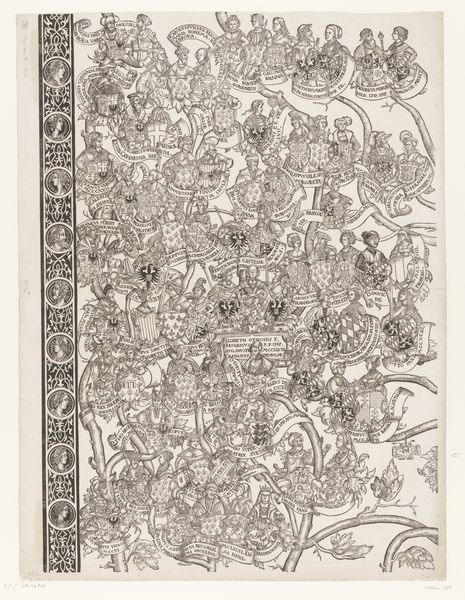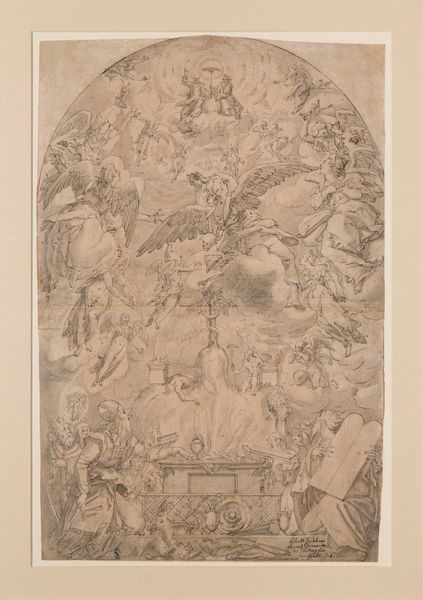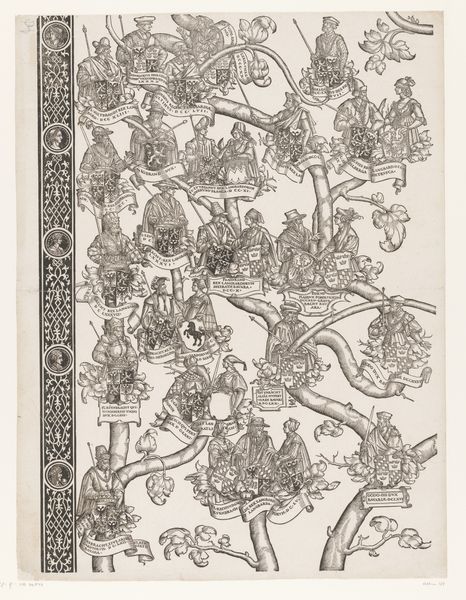
drawing, pencil
#
drawing
#
narrative-art
#
figuration
#
romanticism
#
pencil
#
history-painting
#
academic-art
#
italian-renaissance
Dimensions: 418 mm (height) x 212 mm (width) (bladmaal)
Johann Friedrich Overbeck made this pencil drawing, "Entry into Jerusalem," sometime in the first half of the 19th century. Overbeck was a key member of the Nazarenes, a group of early 19th-century German Romantic painters who aimed to revive honesty and spirituality in Christian art. This drawing is rooted in a desire to return to earlier models of art production, imitating Italian artists of the late middle ages and early renaissance. It is full of religious symbolism and classical architectural references. Germany at this time saw rising nationalism and religious revival, with strong calls for moral and artistic renewal. This context informs Overbeck's style and subject matter. He invites the viewer to consider both the aesthetic and the ethics of art. As historians, we can better understand this artwork by researching the Nazarene movement, Christian iconography, and the socio-political context of 19th-century Germany. In doing so, we can appreciate the artist’s role within a specific institutional and social setting, and how the image invites contemplation and a particular sense of cultural identity.
Comments
No comments
Be the first to comment and join the conversation on the ultimate creative platform.
